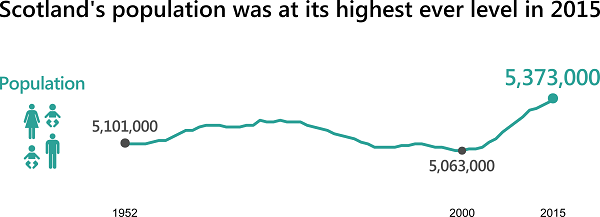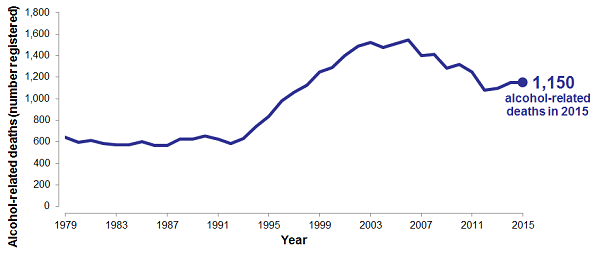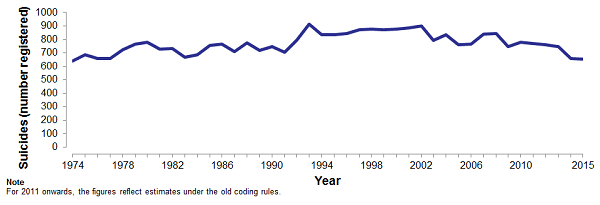National Records of Scotland (NRS) today publishes ‘'Scotland’s Population 2015 – the Registrar General’s Annual Review of Demographic Trends'.
Tim Ellis, the Registrar General of Scotland, said:
“The figures produced by National Records of Scotland paint a picture of our nation in 2015. The Registrar General’s Annual Review has been published since 1855, and over that time my predecessors have faithfully recorded the state of our nation, and told our story – one of changes, both big and small.
“The population in 1855 was 2,978,065. This year’s figures show our population is still increasing, mostly due to migration, and in 2015 was at its highest ever at 5,373,000 people. The population is continuing to age and this change will bring both opportunities and challenges in the years ahead.
“As well as more people moving to Scotland than leaving, fewer babies were born during 2015 and there were more deaths than in 2014.
“The most common causes of death are still cancer, respiratory system diseases and ischaemic (coronary) heart disease.
“Although mortality rates in Scotland have generally fallen more slowly than in the rest of the UK and elsewhere in Europe, the improvements over the last 60 years are still considerable and the impact is reflected in the increase in expectation of life. Despite these improvements inequalities remain within Scotland. For example, males born around 2012 in the 10 per cent least deprived areas in Scotland could expect to live 12.5 years more than males born in the 10 per cent most deprived areas.”

The report on Scotland’s Population shows that:
-
The estimated population of Scotland on 30 June 2015 was 5,373,000, the highest ever recorded.
-
In the year to 30 June 2015, 85,000 people came to Scotland (from the rest of the UK and from overseas) and 57,000 left Scotland (to the rest of the UK and overseas). This resulted in a net increase in population of 28,000.
-
There were 55,098 births registered in Scotland in 2015. This was 1,627 (2.9 per cent) fewer than in 2014, resuming the downward trend over the five years prior to 2014.
-
There were 57,579 deaths registered in Scotland in 2015. The main causes of death were cancer (16,093), respiratory system diseases (7,669) and ischaemic (coronary) heart disease (7,142).
-
Life expectancy in Scotland has improved greatly over the last 33 years. Life expectancy of those born around 2014 is now 77.1 years for males and 81.1 years for females. However, life expectancy in Scotland has improved more slowly than in the rest of the UK and elsewhere in Europe and inequalities within Scotland remain. Life expectancy is still lower by 12.5 years for males in the 10 per cent most deprived areas compared with males born in the 10 per cent least deprived areas, for males born around 2012 (the latest life expectancy figures by deprivation).
-
There were 29,691 marriages in Scotland in 2015. Of these, 1,671 were same-sex marriages following The Marriage and Civil Partnership (Scotland) Act 2014 coming into force on 16 December 2014. The majority of same sex marriages were couples who changed their existing civil partnerships to marriage – 936, or 56 per cent. There were only 64 civil partnerships – 33 male couples and 31 female couples. The average age at which people marry for the first time has increased by around two years since 2005, to 33.6 years for men and 31.9 years for women in 2015.
-
In 2015, there were 504 adoptions recorded in Scotland, an increase of 11 per cent over 2014 and the highest number recorded since 1996. The number of adoptions each year is around a quarter of what it used to be in the early 1970s.
-
In mid-2015, there were 2.43 million households in Scotland, which is an increase of around 160,000 over the past ten years.
The report also includes the invited chapter ‘Migrants in Scotland’s population histories since 1850’, written by Prof. Michael Anderson, Professor Emeritus of Economic History and Honorary Professorial Fellow of the University of Edinburgh. This chapter draws on material from his on-going research into the population histories of different parts and occupational groups of Scotland, in the context of wider British and European population change, and explores some of the key patterns and roles of migration in Scotland’s population histories since the middle of the nineteenth century.
The report is a compendium that brings together key demographic information from a range of publications produced by NRS. It has been produced annually since it was first published in 1855. It is accompanied by an update on a wide range of other statistics on births, stillbirths, adoptions, marriages, civil partnerships and deaths, which appear in the Vital Events Reference Tables and in website sections on deaths from certain causes.
Among the other information published by NRS today:
-
There were 1,150 alcohol-related deaths in 2015, very similar to the 2014 figure of 1,152.

-
There were 672 probable suicides in 2015, 24 (three per cent) fewer than in the previous year.

-
Age-standardised death rates fell by 12 per cent between 2005 and 2015 for all ages and by 17 per cent for people aged under 75.

The full publications Scotland's Population 2015 - The Registrar General's Annual Review of Demographic Trends, Vital Events Reference Tables 2015 and Deaths by various causes (excluding Drug-related Deaths and Winter Mortality) are available on this website.
An infographic booklet on Scotland’s population has also been published today on this website.